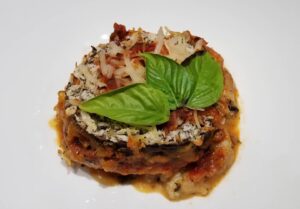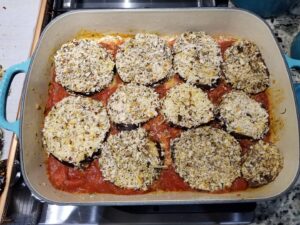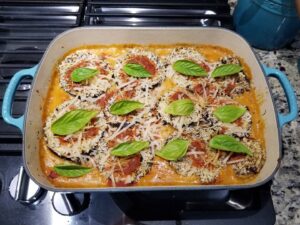
The Transformation of Culinary Habits during the COVID-19 Pandemic
The COVID-19 pandemic brought a revived culture to the modern family. It is the culture of home cooks. The era of convenience had come to a screeching halt, and everyone was now forced to be quarantined at home, with restricted access to grocery stores and a tight schedule that required juggling a hefty work agenda, being a surrogate teacher for kids that were now homeschooled and keeping a household from falling apart. The upside to this experience was that families got endless opportunities to spend solid hours bonding and creating lifetime memories, especially in the kitchen. This pandemic had a significant impact on the culinary practices of many. It changed the way we shopped for groceries, planned for meals, and ate. The COVID-19 pandemic was a culinary life changer. It changed me!
With the implementation of global lockdowns, there was restricted access to the grocery store. Shoppers were no longer able to visit a variety of grocery stores to gather specialized items on their grocery lists. Instead, they had to shop at one store and make do with what they could find. There was also a substantial growth in the purchase of shelf-stable groceries, since weekly grocery store runs now extended to bi-weekly or even monthly. Food shoppers were now choosing to buy more frozen, canned, and dried foods since these came with extended shelf lives. There was even a bakers’ movement that involved intentional focus on making the heartiest and tastiest breads and baked goods, from scratch, at home. I remember spending countless evenings on WhatsApp with one of my cousins in Jamaica helping her to perfect several bread recipes. Others became more in-tuned with nature and started home gardens filled with fresh produce and a host of herbs. I became a true believer in my home garden during the pandemic and my garden flourished. I had several harvests of okras, tomatoes, egg plants, greens, a variety of squashes, peppers and beans, watermelons, mint, thyme, and scallion. From that point on I have looked forward to every gardening season, with promises of bountiful harvests like those experienced during the pandemic years.

Drastic changes in shopping habits and food availability made meal planning and meal preparation a big deal. The self -proclaimed at-home chefs and food enthusiasts were forced to think outside the box, step outside of their comfort zones to find creative ways of making meals more appetizing and appealing with new and/or missing ingredients. This made it extremely challenging for those who were on strict diets like myself, who had recently embarked on a plant-based journey, months prior to the pandemic making its grand entrance. Luckily, social media came to my rescue and became one of my sources of inspiration as I explored and experimented with a host of fruits, veggies, beans, nuts, and mushroom combinations. I became a pioneer in my own right with the goal of veganizing my favorite Jamaican meals first and other cultural cuisines later, as my time spent in the kitchen became longer and my confidence in creating plant-based meals grew. My experience was not unique, and this is reflected in the uptick in viewership of thousands of cooking tutorials, videos and reels that trended on various social media platforms during this time.

These changes also impacted how we ate, as the spread of COVID exposed the fragility of our humanity. COVID-19 was partial to no one as we saw the young, old, healthy and the health compromised being equally impacted. With the threat of our humanity fresh on our minds, we were forced to reassess the state of our socialization, physical health, and mental well-being, and these all influenced how we cooked and how we ate. The convenience of fast-food and eating out became a thing of the past as individuals became mindful of protecting themselves and their loved ones from becoming ill. People, now stuck at home, became more open to trying new recipes, new seasonings and became masters of making meals from scratch! They also became more intentional about making healthy food choices and incorporated more foods that contained natural ingredients to boost their immunity and overall health in their meals. So, more homemade meals were plant-based, contained more natural ingredients, and were packed with produce that was locally grown and sourced, with little to no hormones, preservatives, or pesticides.

Although the days of lockdowns, quarantines and rationed food items are almost 2 years behind us, the impact of COVID-19 in the home kitchen still lingers on today. Many families are still choosing to prepare and eat most of their meals at home, they have stuck to or even expanded on the inclusion of more healthy options at the dinner table, and they have been intentional about making their children more self-sufficient and aware in the kitchen. As for me and my family, I am about 4 years strong along my plant-based journey and prepare from-scratch plant-based meals 3 to 4 times weekly for my family. My girls have slowly joined in on the fun. They are enthused about exploring, preparing, and indulging in healthy meal options.
How has the COVID-19 pandemic changed the way you think about food?
Previously published on the Monitortribune.com on April 16, 2023.
